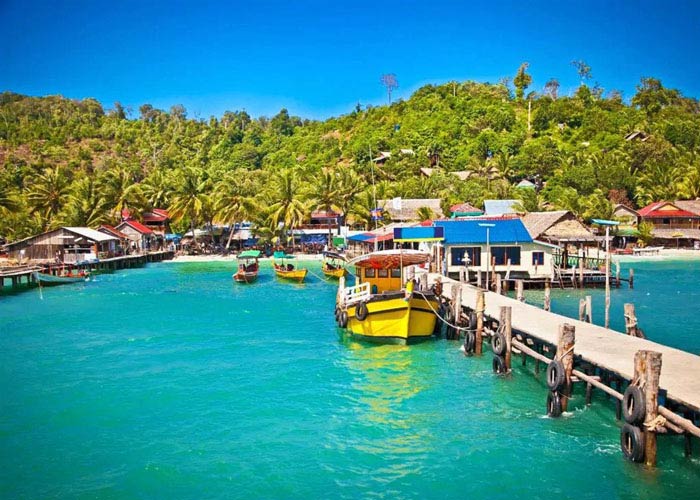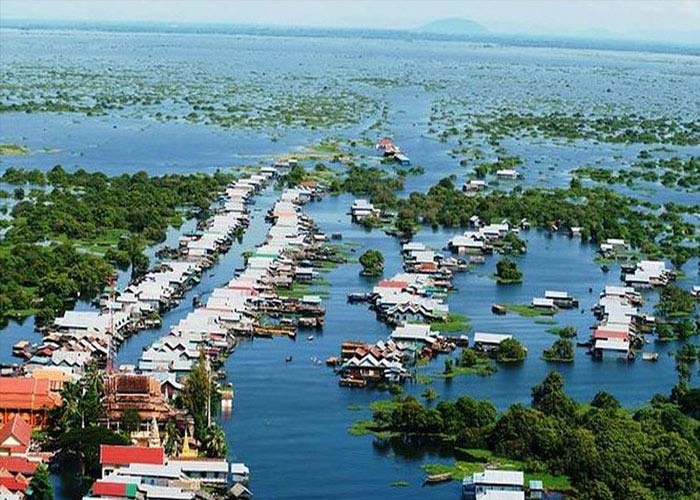Some tips on travelling to Cambodia
Anyone who has visited Cambodia attracted by the ancient beauty, the supreb view of this place. Before travelling this beauty country, you shoud take these basis knowledge below to be ready for the trip.
Currency
Cambodian Riel (KHR) is official currency in Cambodia. However, USD is the most popular currency for tourists to this country, you don't need to change local currency. You should repare changes (US $1 is better) to be easier for spending.
Accommodation

Transportation
Coach, bus is the good choice for going around big cities in case you don't have any private transport. Local city transport is quite cheap, it just cost a few dollars. Tuk-tuks can be found on every corner in big cities, you should negotiate a price in advance (no more than US $5) to avoid expensiveness. Renting a driver for the day will set you back between US $15 - 20, you can ask the hotel for finding you one. Only with US $18, tourists can get a bus to anywhere in the country, for instance, the bus from Siem Reap to Thailand is only US $13, catching bus or mini-bus for the journey Siem Reap to Phnom Penh dily for US $10 each person.

Food
Street food is very cheap in Cambodia. Local street vendors will cost you about US $1-2 per meal, and basic restaurant meals will cost between US $3-5. Western meals at nice restaurants go between US $5-15 per person. There are hundred of specialities you must try during the trip to Cambodia such as Bai sach chrouk (pork and rice), fried fish, red carry, Lap Khmer (beef salad), Nom banh chok (Cambodian rice noodle soup), Kdam chaa (fried crab), Ang dtray meuk (fried squids), Cha houy teuk (jelly and gruel sweet), beef stir-fried with ant, etc. Besides, Cambodian cuisine is also known for special dishes from insects like: spider, cricket, scorpion,... but not all people want to try this kind of food.
Activities, things to do and see
Angkor Wat: This huge temple complex is the reason most people visit Cambodia. The temple ruins are massive, and you’ll need a few days to explore all of them. While there’s a lot more to the country than this UNESCO site (too many people only come to visit Angkor), no trip is complete without satisfying your inner Tomb Raider and exploring these ruins. If you’re not a history buff then just purchase a single-day ticket ($37). Everyone else may want to consider the 3-day ticket ($72), which offers a bit of a discount. Consider hiring a tuk-tuk for the day, otherwise, rent a bicycle and explore the ruins at your own pace.

Phnom Penh: Phnom Penh is the vibrant bustling capital of Cambodia. Situated at the confluence of three rivers, the mighty Mekong, the Bassac and the great Tonle Sap, what was once considered the 'Gem' of Indochina. The capital city still maintains considerable charm with plenty to see. It exudes a sort of provincial charm and tranquillity with French colonial mansions and tree-lined boulevards amidst monumental Angkorian architecture. Phnom Penh is a veritable oasis compared to the modernity of other Asian capitals. A mixture of Asian exotica, the famous Cambodian hospitality awaits the visitors to the capital of the Kingdom of Cambodia.

Kampong Cham: Kampong Cham is the capital of the province of the same name and the third largest city in Cambodia. With its Mekong River location and relatively close proximity to Phnom Penh (123km) and Vietnam, Kampong Cham has always been an important trade and transportation hub. The highway from Phnom Penh is in excellent condition-you can get here in just under two hours by road or by the bullet boats that are a main mode of transportation between towns on the Mekong River. While the city in itself is something to explore, you should also check out the ruins at Nokor Wat. One of the highlights here is a detailed series of murals which depict religious torture scenes.

Koh Kong: Koh Kong is the most southwestern province of Cambodia. It is one of the biggest provinces in the whole country with a long undeveloped coastline and a mountainous, forested and largely inaccessible interior, which embraces part of the Cardamom Mountains, the biggest rainforest of Southeast Asia. Its tourist attractions include abundant wildlife; big waterfalls and casinos on the border to Thailand. The best time to visit is October to April in the following year. The other time, in windy season, the country attracts visitors with green lawns and cultural remains upholding through years.

Bokor National Park: Bokor National Park (Preah Monivong National Park) was established by Royal decree in 1993. Named after its shape, Bokor (ox hump mountain) is part of the Elephant Mountain range. The park spans an area of about 1,580 square kilometers of protected, dense primary rainforest, bordering the Cardamom Mountain Range in the East, Kirirom National Park in the North and ending less then a kilometer from the coastline in the South.

Tonlé Sap: The Tonlé Sap is a unique, natural wonder of the world; for most of the year it is relatively small, however come the rainy season, the Tonlé Sap River reverses direction, flooding the lake and increasing its size almost tenfold to become the largest freshwater lake in South-East Asia. There are a total of 360 floating villages on the lake, several of which can be visited on a day trip from Siem Reap. Along with the houses, will discover shops, schools, temples and even churches.


